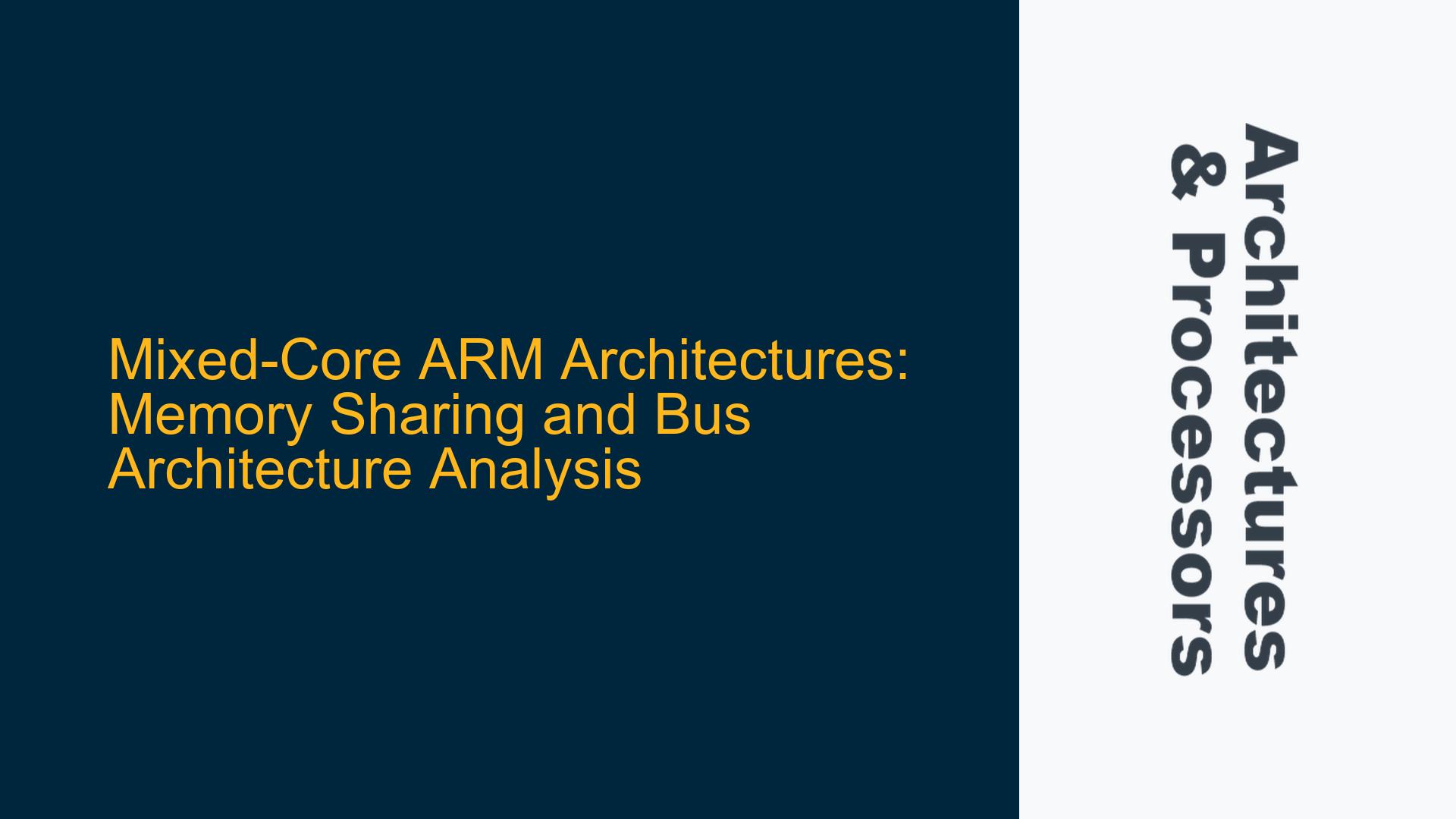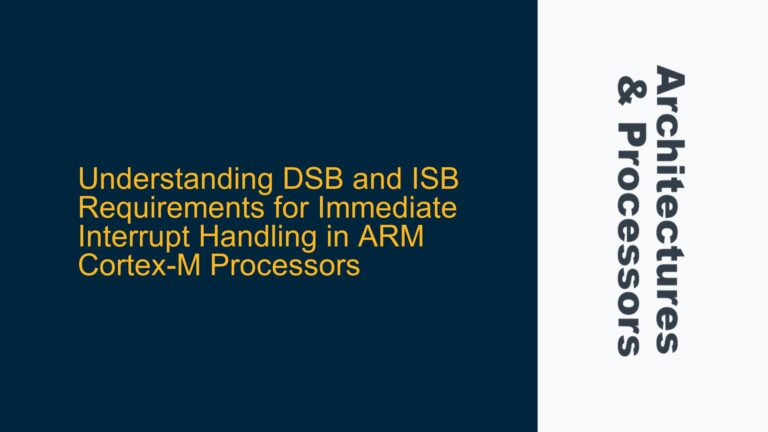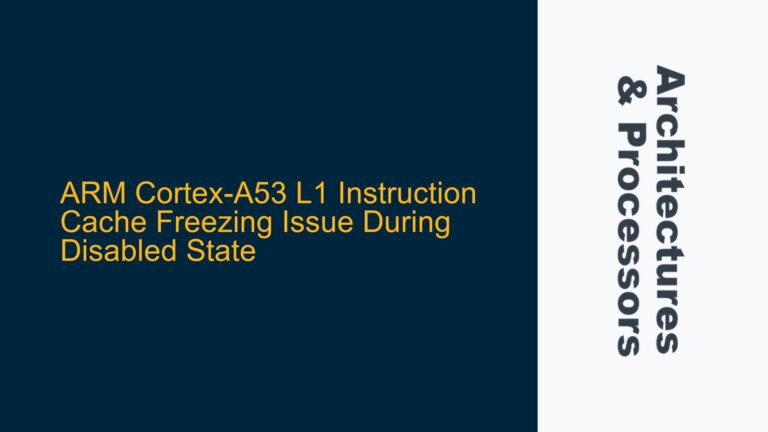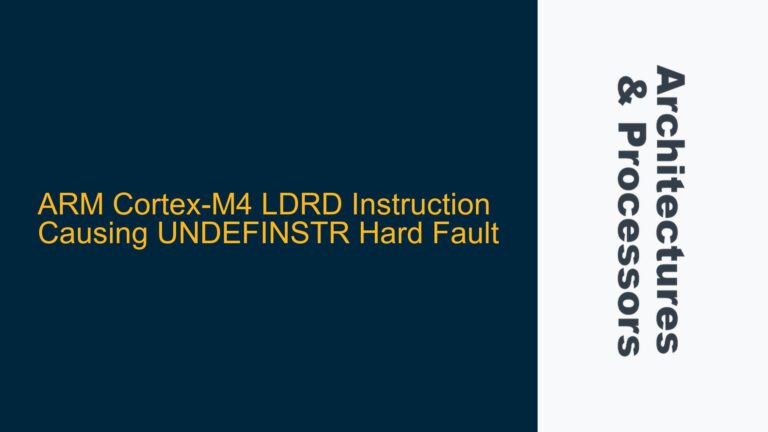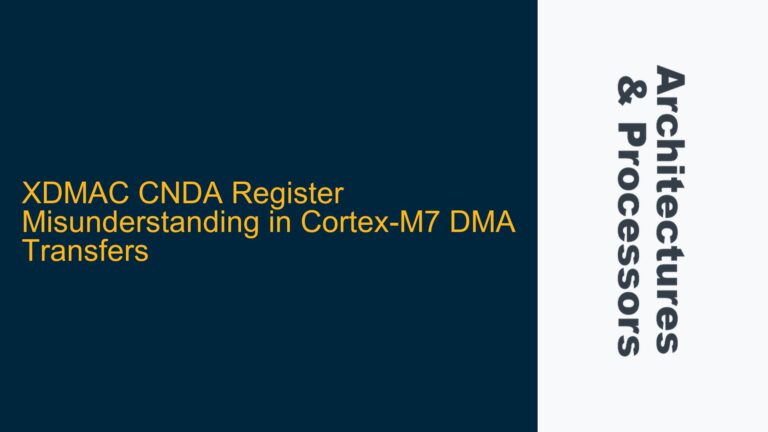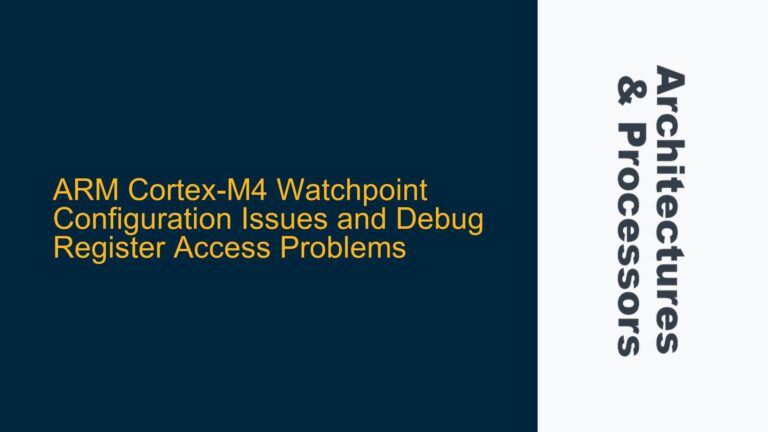Heterogeneous ARM Core Memory Sharing and Bus Architecture
In modern embedded systems, heterogeneous ARM architectures are increasingly common, combining cores with different instruction sets, performance profiles, and even operating systems. A prime example is the integration of Cortex-A (application) and Cortex-M (microcontroller) cores on the same chip, such as the STM32MP1 series or NXP i.MX 7 processors. These systems often require shared memory access between cores, but the implementation details can be complex due to differences in bus architectures, memory management, and core capabilities.
The memory system in such heterogeneous architectures is typically segmented into shared and core-specific regions. Shared memory regions allow data exchange between cores, while core-specific regions are reserved for private data or peripherals. The bus architecture plays a critical role in enabling this memory sharing. For instance, Cortex-M cores often use AHB-Lite, while Cortex-A cores use AXI. These buses are interconnected through bridges or interconnect fabrics, which manage data coherence and access permissions.
Physical address range segmentation is a common method for memory sharing. For example, a Cortex-A core might access a shared memory region at address 0x20000000, while a Cortex-M core accesses the same region at 0x10000000. The memory controller or interconnect fabric translates these addresses to the same physical memory location. However, this approach requires careful configuration to avoid conflicts and ensure data consistency.
Bus Architecture Variations and Memory Access Constraints
The bus architecture in mixed-core systems varies significantly depending on the specific ARM cores and their configurations. Cortex-M4 cores typically use AHB-Lite, a simpler bus protocol optimized for low-power, real-time applications. In contrast, Cortex-M7 cores often use AXI, a more advanced protocol supporting higher bandwidth and more complex memory hierarchies. Cortex-A cores, designed for high-performance applications, also use AXI but with additional features like cache coherency and multi-core synchronization.
These differences in bus architectures can lead to memory access constraints. For example, a Cortex-M4 core using AHB-Lite might not have direct access to peripherals or memory regions managed by an AXI-based Cortex-A core. Similarly, a Cortex-A core might not be able to access tightly coupled memory (TCM) regions reserved for a Cortex-M core. These constraints are typically addressed through memory mapping and access control mechanisms implemented in the interconnect fabric.
Another challenge is ensuring data coherence between cores with different cache architectures. Cortex-A cores usually have multi-level caches with hardware-managed coherence, while Cortex-M cores might have no cache or only a simple cache without coherence support. This discrepancy can lead to stale data issues if not properly managed. Software-based solutions, such as explicit cache invalidation or flushing, are often required to maintain data consistency.
Configuring Shared Memory and Optimizing Bus Interconnects
To enable efficient memory sharing in mixed-core ARM systems, developers must carefully configure the memory map and optimize the bus interconnects. The first step is to define the shared memory regions in the memory map, ensuring that each core can access these regions without conflicts. This often involves setting up address translation tables in the memory management unit (MMU) or memory protection unit (MPU) of each core.
Next, the bus interconnects must be configured to support the required data paths between cores. For example, an AHB-to-AXI bridge might be needed to connect a Cortex-M4 core to an AXI-based memory controller. These bridges must be configured to handle differences in bus protocols, such as data width, burst lengths, and handshake signals. Additionally, the interconnect fabric should be optimized for latency and bandwidth, especially in systems with high data throughput requirements.
Cache management is another critical aspect of configuring shared memory. In systems with Cortex-A and Cortex-M cores, software-based cache coherence mechanisms are often necessary. For example, the Cortex-A core might need to invalidate its cache before reading data written by the Cortex-M core. Similarly, the Cortex-M core might need to flush its write buffer before the Cortex-A core can read the updated data. These operations can be implemented using memory barriers or dedicated cache control instructions.
Finally, developers should consider the impact of operating systems on memory sharing. In systems with different OSs on each core, such as Linux on a Cortex-A core and FreeRTOS on a Cortex-M core, inter-process communication (IPC) mechanisms are required to coordinate memory access. These mechanisms might include shared memory buffers, message queues, or hardware semaphores. The choice of IPC mechanism depends on the specific requirements of the application, such as latency, throughput, and reliability.
By carefully configuring shared memory regions, optimizing bus interconnects, and implementing robust cache management and IPC mechanisms, developers can achieve efficient and reliable memory sharing in mixed-core ARM systems. This approach enables the full potential of heterogeneous architectures, combining the high performance of Cortex-A cores with the real-time capabilities of Cortex-M cores.
